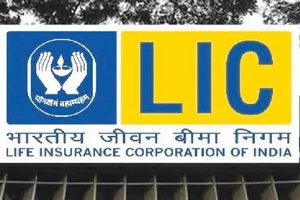Life Insurance Corp of India was seeded by the government in New Delhi, but nourishing the sapling to a colossus with 39.6 trillion rupees ($525 billion) in assets under management — and more lives assured than Pakistan’s population — has fallen on generations of loyal customers. Which is why LIC’s upcoming initial public offering, India’s biggest ever share sale, raises a troubling question: Will a cash-strapped state get greedy and end up shaking the money tree so hard that it stops bearing fruit for future policyholders?
LIC was born in 1956 after 25 private insurance players went bust in India in the decade after World War II. Alarmed by the destruction of savings in the newly independent nation, and impatient to expand coverage beyond a tiny urban affluent class, a socialist-minded government nationalised the insurance business, giving the state-owned firm just about $10 million in seed capital and an undisturbed monopoly.
The monopoly ended in 2000, but the moat remains intact. Even now, when it spars with nearly two dozen non-state rivals, LIC has a 64% share of gross written premiums; it issues three out of India’s four individual policies and holds 4% of all publicly traded shares in the country. The all-pervasive role that LIC plays in India’s financial life has made the IPO a contentious exercise — just like the privatisation of Japan Post.
To extract value from the national insurer, the government first had to create about $850 million in shareholder funds that LIC didn’t need; it did that by letting its dividends accumulate for a couple of years. Next, New Delhi will sell 5% of this puffed-up stake to narrow a $213 billion hole in its budget. While the offer price is still undisclosed, the risk is that to make the sale appealing when investors globally are on the edge about US monetary tightening and the risk of war in Ukraine, the government might sacrifice the long-term interest of small savers, the same people who actually funded the business and continue to make it tick.
That controversy centres on embedded value, a measure used by the life insurance industry that combines capital and surplus accumulated in the past with the present worth of future profits from in-force policies. The IPO prospectus pegged LIC’s embedded value at $72 billion.
By tweaking its surplus sharing policy, the institution has given a fivefold boost to the present value of future profit in just six months. Still, critics claim that the exercise grossly
undervalues the franchise, including a sprawling real-estate portfolio.
The economics is undoubtedly tilting towards investors. The share of investment surpluses accruing to participating policyholders will gradually reduce to 90% by financial year 2025.
—Bloomberg
 The Gulf Time Newspaper One of the finest business newspapers in the UAE brought to you by our professional writers and editors.
The Gulf Time Newspaper One of the finest business newspapers in the UAE brought to you by our professional writers and editors.
